I was introduced to Dr Andreas Kokkinis and Dr Celine Tan from Warwick University after creating a 4-page visual summary on labour standards for Dr James Harrison. While impressed with the stand-alone document that was presented to policymakers in Brussels with great success and impact, Andreas and Celine had their minds on something else.
They wanted to launch a policy brief series across the GLOBE centre, short for the Centre for Law, Regulation & Governance of the Global Economy.
I was intrigued by this initiative and saw it as an opportunity to harness our expertise.
Do you want to know more about what they had in their minds and the project we developed together?
Let´s start!
Our objective
If you’re curious, read our blog post on why policy briefs can be useful to present research (it even includes a lovely infographic on the 5 steps to write a policy brief)!
After an intense brainstorming session (fuelled by one too many coffees), we decided that the purpose of this GLOBE-Research Retold collaboration would be twofold:
1. Short term: Supporting the production of four individual policy briefs; and
2. Long term: Building capacity within the centre to create policy briefs by putting in place the right tools and guidance.
To meet these aims, we agreed on three deliverables:
1. Template: An easily editable design template and user guide for the production of the policy briefs;
2. Workshop: A workshop about communicating research outside academia (the workshop publicised here and more details to come in a blogpost); and
3. Support: Bespoke editorial and design support for the production of the first 4 policy briefs.
This blogpost focuses on the step-by-step process of producing the first policy brief of the GLOBE series, authored by Dr Andreas Kokkinis and titled: “Brexit: Preserving the UK’s success as service economy”.
Step 1: Introductory Call & Research Consultation
The first step in the production of the policy brief was having a 1-hour call with Andreas. We covered a few important points:
– A short introduction about the collaboration and desired outcomes;
– An introduction to Andreas’ research;
– The difference between writing a policy brief and a journal article;
– The structure of the policy brief;
– The production stages;
– Required materials and time commitment; and
– Q&A for any clarifications needed.
Although Andreas had been in discussions about the GLOBE initiative from the beginning, the call was necessary to frame the process and place him in the right mindset for producing the initial draft of the policy brief.
Step 2: Text Editorial Guidance
Original research source
This policy brief was based on his paper ‘The Impact of Brexit on the Legal Framework for Cross- Border Corporate Activity’ in the European Business Law Review, Vol 27, Issue 1 (2016). Therefore, he first copied the abstract, introduction and conclusion into our shared document, which was a good starting point to flesh out the content.
Pre-writing questions
To aid his next writing step, Andreas answered these questions:
– What would be the purpose of communicating my research in a policy brief?
– Who is my audience?
– If I could speak to three key stakeholders who would they be and why?
– What’s their current position on this topic and what are the current gaps in their evidence base?
– Which findings should I tell these individuals to capture their attention and respond to gaps in their evidence base?
– What specific policy or behavioural changes would I want to see happen as a result of your brief?
Structuring the policy brief
Andreas then provided us with ±750 words of material for the policy brief. He arranged the text in the following way:
– Executive Summary: 80 words
– Body of text: 550 words
– Policy Recommendations: 120 words
The most important piece of editorial advice was rearranging the text in a more logical and easy-to-follow narrative and structure. We organised the content around the four major financial benefits the UK currently draws from the EU. This structure wasn’t immediately clear from the onset, but rather it emerged as a result of our discussions.
Unpacking the jargon
Further editorial guidance consisted of unpacking the academic jargon and ensuring the phrasing is as clear as possible. Given the short space available, I read every sentence with a ‘So What?’ question after it, to ensure it was relevant and that it helped make the overall point of the brief.
I arranged a further call with Andreas to go over the changes and reach a near-final version of the text. In total, the text editorial guidance stage required 2 opportunities for feedback and the content had reached this stage:
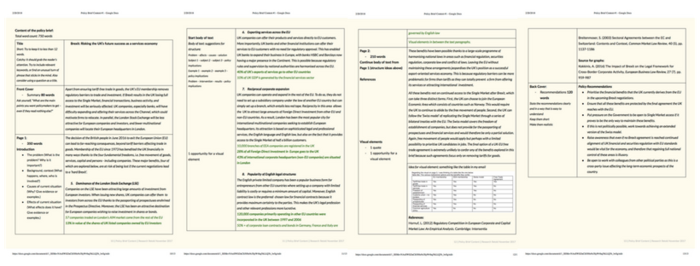
Step 3: Design Guidance
Visual elements
Crucially, the policy brief contains visual elements to break up the text and visually illustrate the points. We asked Andreas to think of a few appropriate visual elements and he chose the following:
a) Percentages to illustrate key points in the body of text:
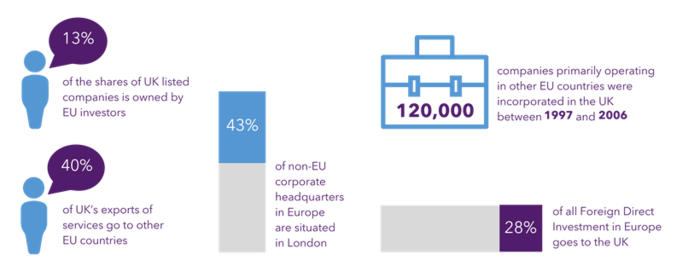
b) A table to indicate the various institutional options and the benefits they offer:
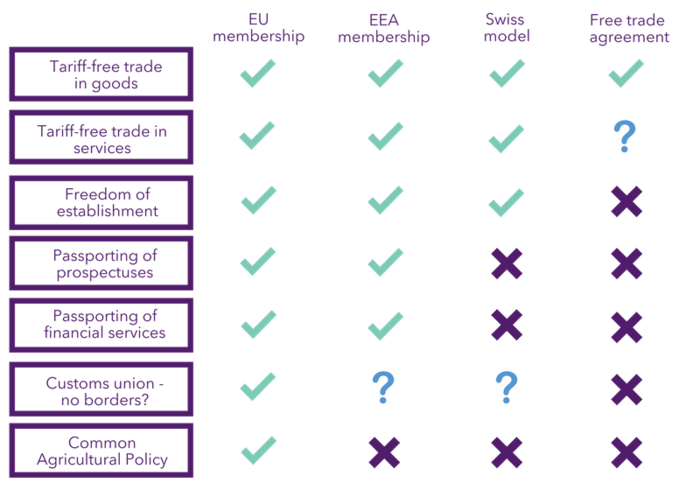
Incorporating the text in the template
We worked with the template that was cohesive with the existing branding of the University of Warwick:
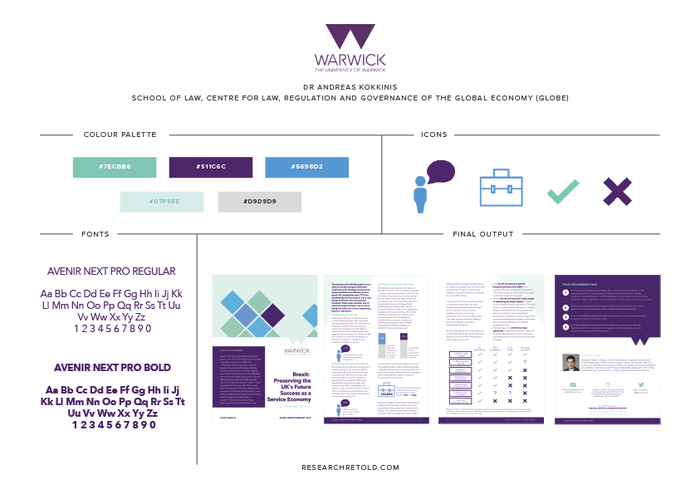
Final polish and review
We continued to edit and improve the brief’s readability during 4 feedback opportunities. Finally, the Department’s Impact Officer, Stephanie Seavers, proofread and further improved the brief. Her advice was crucial on the recommendations section, now punchier and directly tied to the brief’s body of text.
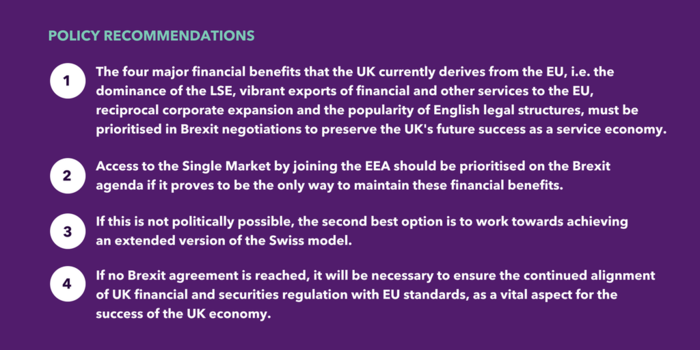
This final review concluded the 3-week process to produce the first policy brief in the GLOBE series. The final result is a brief that frames Andreas’ research in a policy relevant light within the current Brexit negotiation debates.
Step 4: Dissemination of brief outside academia
Once everyone approved the brief, we took a few steps to publish and disseminate it:
Creating a dedicated website
The GLOBE policy brief series has its home on the GLOBE website, and a shortened URL version was provided: http://go.warwick.ac.uk/globe/policybriefs
Making a list of potential dissemination ideas
In our post about Policy Briefs in the blog series ‘Ways to Present Research’ we mentioned 9 ways for a researcher to share their policy brief outside academia. These were our starting point:
 Involving the Press Office in the series’ launch via press releases
Involving the Press Office in the series’ launch via press releases
Andreas liaised with the Press Office at Warwick University and prepared a University-wide press release as well as a news item on the GLOBE website announcing the launch of the series and our collaboration, remarking:
Composing an outreach message
We composed a short and sweet template email for engagement with contacts outside academia. This email doubles up as a cover letter (the brief can be printed and posted to relevant people):
Subject: A policy brief on [topic of brief]
Dear [Contact Name],
I’m reaching out to you because I know you are interested in […] given your […].
I recently published a policy brief on [synopsis of brief] which contains policy recommendations for […].
[insert image of the policy recommendations section in the email / letter]
You can read the short policy brief in full here and let me know what you think.
I’m a researcher and [insert title] at [insert name of institution & department].
If you would like to have a further conversation about this policy brief or to share it, do get in touch.
Best wishes,
[name & signature]
We’re thrilled with this policy brief and we loved working with Andreas. We would love to hear your thoughts on it, too!
What do you think of the new policy brief for Dr Andreas Kokkinis from GLOBE, University of Warwick?
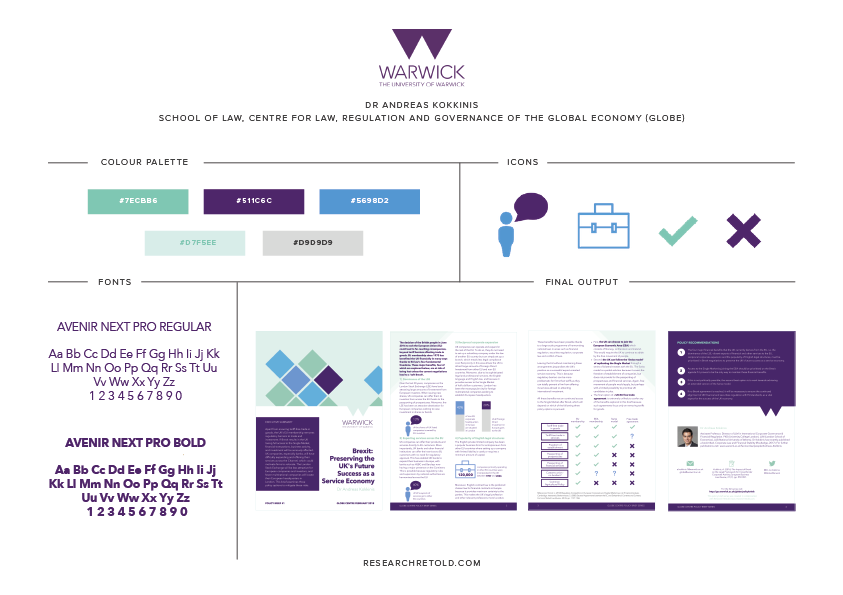
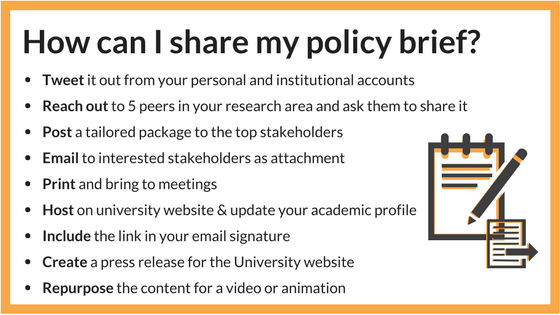 Involving the Press Office in the series’ launch via press releases
Involving the Press Office in the series’ launch via press releases